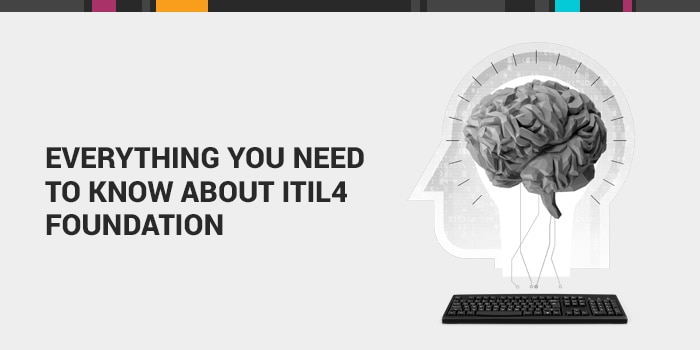Introducing the ITIL 4 Foundation
This year brings us a new version of ITIL, the world’s leading best practice guidelines for IT service management (ITSM). The ITIL 4 release will come in sections, each rolled out one at a time and building on the one that comes before it, so let's begin by reviewing the recently released ITIL 4 Foundation. The release is primarily about the shift in focus from service delivery to value creation.
The ITIL 4 Foundation is all about creating a service management strategy that creates value across the board. This win-win strategy creates value for the customer (user, employee, etc.) while also creating value for the service provider. This unified strategy for service management strives to build a platform that integrates applications across departments, streamlining data and boosting efficiency for the entire organization.
Key ITIL 4 Foundation Terms
At the base of the foundation for the new ITIL 4 concept are a few basic terms. First of all, ITIL 4 defines service as, “a means of enabling value co-creation by facilitating outcomes that customers want to achieve, without the customer having to manage specific costs and risks.” Unpacking that definition leads to further understanding of terms at the base of this primary shift in ITIL 4, from delivering IT services, to value creation across organizations through the delivery of those services.
- Value
- ITIL 4 states that value is the “perceived benefits, usefulness, and importance of something.” This shifts the definition of value from something intrinsic, to something perceived. It is the customer or user’s perception of value that matters, not the actual or inherent value.
- Outcomes
- ITIL 4 shifts the definition of outcome from the thing that is delivered to the result of what is delivered. The service’s perceived value is what matters; that is the outcome, not the delivery of service.
- Costs and Risks
- Costs and risks are defined as the benefits gained through service as the service provider removes the burden of costs and risks from the customer and the expenditure of the customer to pay for that service. The value of the service is determined by the balance of costs and risks added to and taken off of the customer via the delivery of service.
Finding Balance in the Four Dimensions of Service Highlighted in the ITIL 4 Release
The four dimensions of service management highlighted in ITIL 4 need to be at the center of consideration when delivering service in an effort to create value. These four dimensions ensure a balanced approach and must be considered during the design and planning of any service delivery:
- Organizations and People
- The culture, hierarchy, skills, competencies, and roles required to design, manage, and deliver value through services.
- Information and Technology
- The tools and infrastructure required to deliver and manage services.
- Partners and Suppliers
- The needed contributions from partnering individuals and organizations necessary to the delivery of service.
- Value Streams and Processes
- The aggregate of all the necessary workflows, processes, management controls, etc., required to deliver service and create value.
The New ITIL 4 Service Value System (SVS)
Lastly, and perhaps most importantly, ITIL 4 introduces a Service Value System (SVS) for understanding how value is created. The primary components of the SVS are the service value chain of six activities – planning, initiating improvement, engaging with stakeholders, designing and creating new services that meet user expectations, obtaining and building new service components that meet customer expectations, and both delivering and supporting services to create value.
At the heart of the ITIL 4 and its SVS are a handful of guiding principles that are easily understood, yet they can be challenging to apply in a continual improvement model of service delivery. These principles require providers to focus on value; to reuse existing processes, programs, and services wherever and whenever possible; to make progress in stages utilizing customer feedback; to collaborate and work transparently and holistically; and to keep things practical while striving to automate and optimize service whenever possible.
To read more on
ITIL 4 and the training and certifications available, visit the
Samanage blog.







